Adventure Travel · Attractions · Featured · Going Out · Peru · Regions · South America · Speciality Travel
5 considerations for hiking the Inca Trail
At the top of the bucket lists of thousands of travelers around the world is hiking the Inca Trail to Machu Picchu. This is a historical route as it was part of the road system of the Inca Empire; it once linked the city of Cusco (the former capital of the Empire) to the mythical citadel of Machu Picchu, itself declared one of the “Seven Wonders of the Modern World.”
 Making this trek is an intense and demanding experience. Although it doesn’t require a Herculean physical prep, it’s advisable to be in good physical condition and to have started exercising a few weeks before the trip. Such preparation is recommended because the hikes are long, lasting up to six hours daily.
Below, we offer you a series of tips and recommendations so that your adventure on the Inca Trail is a great, safe, pleasant and an unforgettable experience.
1. Dry / high season treks
To avoid disappointment or surprises, it’s important that you carefully consider the season in which you want to make your trek. The dry season extends between May and September, when the days are sunny and there’s a spring-like atmosphere. The temperature reaches up to 26ºC (79ºF) during the day, but drops to as low as 0ºC (32ºF) at night.
Making this trek is an intense and demanding experience. Although it doesn’t require a Herculean physical prep, it’s advisable to be in good physical condition and to have started exercising a few weeks before the trip. Such preparation is recommended because the hikes are long, lasting up to six hours daily.
Below, we offer you a series of tips and recommendations so that your adventure on the Inca Trail is a great, safe, pleasant and an unforgettable experience.
1. Dry / high season treks
To avoid disappointment or surprises, it’s important that you carefully consider the season in which you want to make your trek. The dry season extends between May and September, when the days are sunny and there’s a spring-like atmosphere. The temperature reaches up to 26ºC (79ºF) during the day, but drops to as low as 0ºC (32ºF) at night.
 Before paying for your flight or making your reservations for this season, take into account that you’ll run into lots of people traveling the route. This is especially the case if you travel between July and August, when thousands of visitors choose this destination for their summer vacation and arrive here en masse, even though there’s a limit as to the number of trekkers hiking on the trail at any given time (up to 500 people).
Also, when making reservations or buying plane tickets, don’t forget that the prices generally go up during the high season. Though the fee to enter the Inca Trail stays the same throughout the year, what do vary are the prices of train and bus tickets, which rise in the high season due to the large influx of visitors. Also, keep in mind that it’s essential to make a reservation in advance to ensure permission onto the route.
Despite being the time most traveled, the high season offers several advantages. In the month of June, for example, several traditional celebrations are held in Cusco. The most important of these being the “Sun Festival,” or Inti Raymi, which fills the streets of Cusco with color and history.
2. Trekking in the rainy / low season?
While the rainy season extends between October and April, you should take into consideration that in February there’s no access to Machu Picchu via the Inca Trail. The route is regularly closed for maintenance at this time. March is a good month for trekking because the rainy season hasn’t started yet. In this month, the days are usually clear and the temperatures pleasant, which makes the route much easier. Also in March, you won’t have to trek among crowds, so you’re likely to enjoy the experience even more.
Before paying for your flight or making your reservations for this season, take into account that you’ll run into lots of people traveling the route. This is especially the case if you travel between July and August, when thousands of visitors choose this destination for their summer vacation and arrive here en masse, even though there’s a limit as to the number of trekkers hiking on the trail at any given time (up to 500 people).
Also, when making reservations or buying plane tickets, don’t forget that the prices generally go up during the high season. Though the fee to enter the Inca Trail stays the same throughout the year, what do vary are the prices of train and bus tickets, which rise in the high season due to the large influx of visitors. Also, keep in mind that it’s essential to make a reservation in advance to ensure permission onto the route.
Despite being the time most traveled, the high season offers several advantages. In the month of June, for example, several traditional celebrations are held in Cusco. The most important of these being the “Sun Festival,” or Inti Raymi, which fills the streets of Cusco with color and history.
2. Trekking in the rainy / low season?
While the rainy season extends between October and April, you should take into consideration that in February there’s no access to Machu Picchu via the Inca Trail. The route is regularly closed for maintenance at this time. March is a good month for trekking because the rainy season hasn’t started yet. In this month, the days are usually clear and the temperatures pleasant, which makes the route much easier. Also in March, you won’t have to trek among crowds, so you’re likely to enjoy the experience even more.
 3. Which trail?
The Peruvian section of the Inca Trail is actually part of a wider network of routes that cross the Andes, routes that can take you to you as far as Quito (Ecuador) or Tucumán (Argentina). Hiking the Peruvian leg of the Inca Trail is one of the most famous and popular activities in South America, which means it attracts the most participants. However, this part of “The” Inca Trail actually consists of a number of different routes to Machu Picchu, each with varying restrictions on the number of trekkers and the number of days a trip can last:
3. Which trail?
The Peruvian section of the Inca Trail is actually part of a wider network of routes that cross the Andes, routes that can take you to you as far as Quito (Ecuador) or Tucumán (Argentina). Hiking the Peruvian leg of the Inca Trail is one of the most famous and popular activities in South America, which means it attracts the most participants. However, this part of “The” Inca Trail actually consists of a number of different routes to Machu Picchu, each with varying restrictions on the number of trekkers and the number of days a trip can last:
 The following are the most popular routes:
The following are the most popular routes:


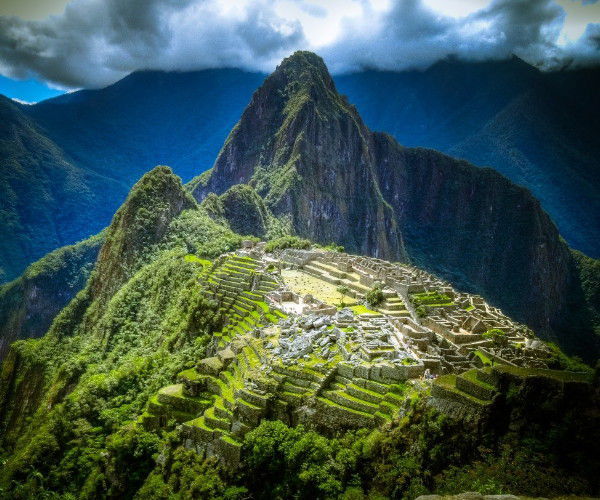 Making this trek is an intense and demanding experience. Although it doesn’t require a Herculean physical prep, it’s advisable to be in good physical condition and to have started exercising a few weeks before the trip. Such preparation is recommended because the hikes are long, lasting up to six hours daily.
Below, we offer you a series of tips and recommendations so that your adventure on the Inca Trail is a great, safe, pleasant and an unforgettable experience.
1. Dry / high season treks
To avoid disappointment or surprises, it’s important that you carefully consider the season in which you want to make your trek. The dry season extends between May and September, when the days are sunny and there’s a spring-like atmosphere. The temperature reaches up to 26ºC (79ºF) during the day, but drops to as low as 0ºC (32ºF) at night.
Making this trek is an intense and demanding experience. Although it doesn’t require a Herculean physical prep, it’s advisable to be in good physical condition and to have started exercising a few weeks before the trip. Such preparation is recommended because the hikes are long, lasting up to six hours daily.
Below, we offer you a series of tips and recommendations so that your adventure on the Inca Trail is a great, safe, pleasant and an unforgettable experience.
1. Dry / high season treks
To avoid disappointment or surprises, it’s important that you carefully consider the season in which you want to make your trek. The dry season extends between May and September, when the days are sunny and there’s a spring-like atmosphere. The temperature reaches up to 26ºC (79ºF) during the day, but drops to as low as 0ºC (32ºF) at night.
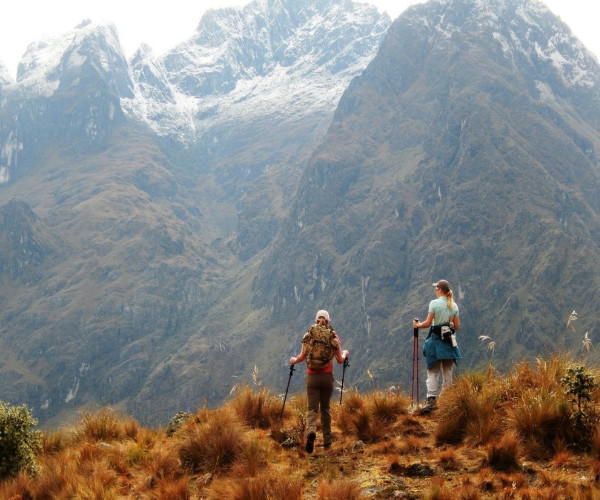 Before paying for your flight or making your reservations for this season, take into account that you’ll run into lots of people traveling the route. This is especially the case if you travel between July and August, when thousands of visitors choose this destination for their summer vacation and arrive here en masse, even though there’s a limit as to the number of trekkers hiking on the trail at any given time (up to 500 people).
Also, when making reservations or buying plane tickets, don’t forget that the prices generally go up during the high season. Though the fee to enter the Inca Trail stays the same throughout the year, what do vary are the prices of train and bus tickets, which rise in the high season due to the large influx of visitors. Also, keep in mind that it’s essential to make a reservation in advance to ensure permission onto the route.
Despite being the time most traveled, the high season offers several advantages. In the month of June, for example, several traditional celebrations are held in Cusco. The most important of these being the “Sun Festival,” or Inti Raymi, which fills the streets of Cusco with color and history.
2. Trekking in the rainy / low season?
While the rainy season extends between October and April, you should take into consideration that in February there’s no access to Machu Picchu via the Inca Trail. The route is regularly closed for maintenance at this time. March is a good month for trekking because the rainy season hasn’t started yet. In this month, the days are usually clear and the temperatures pleasant, which makes the route much easier. Also in March, you won’t have to trek among crowds, so you’re likely to enjoy the experience even more.
Before paying for your flight or making your reservations for this season, take into account that you’ll run into lots of people traveling the route. This is especially the case if you travel between July and August, when thousands of visitors choose this destination for their summer vacation and arrive here en masse, even though there’s a limit as to the number of trekkers hiking on the trail at any given time (up to 500 people).
Also, when making reservations or buying plane tickets, don’t forget that the prices generally go up during the high season. Though the fee to enter the Inca Trail stays the same throughout the year, what do vary are the prices of train and bus tickets, which rise in the high season due to the large influx of visitors. Also, keep in mind that it’s essential to make a reservation in advance to ensure permission onto the route.
Despite being the time most traveled, the high season offers several advantages. In the month of June, for example, several traditional celebrations are held in Cusco. The most important of these being the “Sun Festival,” or Inti Raymi, which fills the streets of Cusco with color and history.
2. Trekking in the rainy / low season?
While the rainy season extends between October and April, you should take into consideration that in February there’s no access to Machu Picchu via the Inca Trail. The route is regularly closed for maintenance at this time. March is a good month for trekking because the rainy season hasn’t started yet. In this month, the days are usually clear and the temperatures pleasant, which makes the route much easier. Also in March, you won’t have to trek among crowds, so you’re likely to enjoy the experience even more.
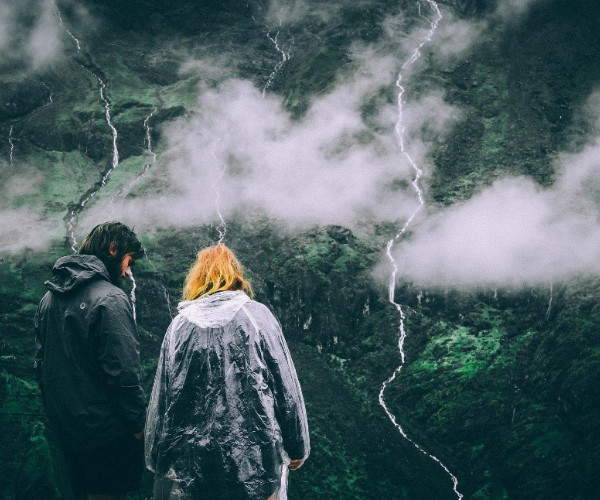 3. Which trail?
The Peruvian section of the Inca Trail is actually part of a wider network of routes that cross the Andes, routes that can take you to you as far as Quito (Ecuador) or Tucumán (Argentina). Hiking the Peruvian leg of the Inca Trail is one of the most famous and popular activities in South America, which means it attracts the most participants. However, this part of “The” Inca Trail actually consists of a number of different routes to Machu Picchu, each with varying restrictions on the number of trekkers and the number of days a trip can last:
3. Which trail?
The Peruvian section of the Inca Trail is actually part of a wider network of routes that cross the Andes, routes that can take you to you as far as Quito (Ecuador) or Tucumán (Argentina). Hiking the Peruvian leg of the Inca Trail is one of the most famous and popular activities in South America, which means it attracts the most participants. However, this part of “The” Inca Trail actually consists of a number of different routes to Machu Picchu, each with varying restrictions on the number of trekkers and the number of days a trip can last:
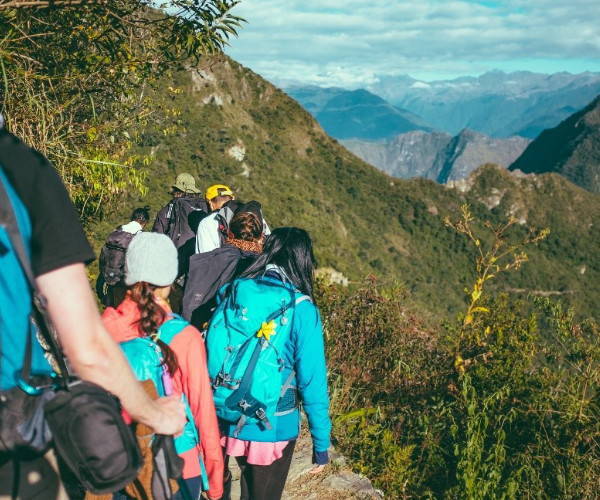 The following are the most popular routes:
The following are the most popular routes:
- The classic Inca Trail route: This 4-day/3-night journey begins near the town of Ollantaytambo, in the town of Piscachucho, which can be reached by private vehicle or by bus. Once there, travelers set out on their 43 km (27 mile) trek to the mystical citadel of Machu Picchu. The road cuts through a series of Quechua villages and at various points you can stay at camps that hikers have set up. Beautiful landscapes and archaeological ruins can be appreciated along this stretch of the journey.
- The short Inca Trail: This 2-day/1-night journey is made by people with more limited time or who don’t want to walk so far. The trek begins in the town of Chachabamba, at an altitude of 2,150 meters above sea level. A 6-7 hour walk will take you to the Puerta del Sol (the “Gate of the Sun”) or Intipunku, which was the main entrance to the Inca city of Machu Picchu. Because this hike is not so demanding, it’s the best route to take with children.
- The Salkantay Route: This alternative route of the Inca Trail accesses the citadel of Machu Picchu via a longer and more complicated path that reaches altitudes of more than 4,700 meters. The route can take five days, but the effort has its reward as it’s brimming with spectacular landscapes. Though you will witness (and can photograph) both jungle and alpine environments, one of the most impressive shots will undoubtedly be the snow-covered peak of the Salkantay Mountain.
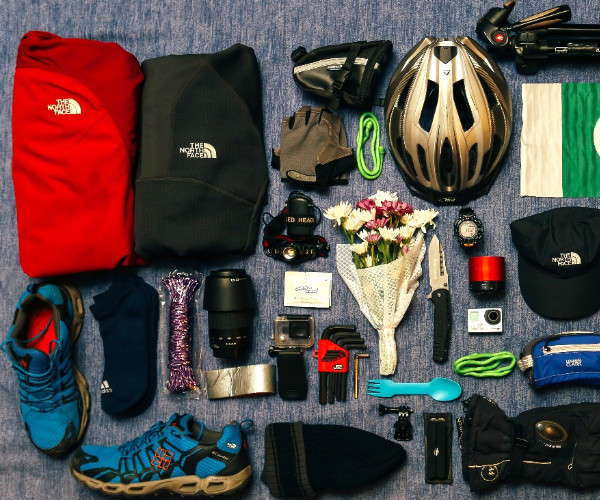
- Shoes: These are perhaps your most important item of all, since improper footwear can literally ruin your adventure. Bring good sports shoes — if possible, not new ones, as it’s better that your feet are already used to them — as well as sandals or crocs to wear after each day of hiking. Remember that you will be wearing your selected shoes for up to eight hours daily, so they must be really comfortable to avoid getting blisters or sores. If possible, waterproof your shoes with some type of spray to prevent your feet from getting wet if it rains.
- A backpack: Another of the “investments” worth thinking about is the backpack that you’ll take you on the trip. It should be ergonomically designed to distribute the weight of your belongings. The most recommended are those that have straps across the chest and waist because they allow you to maintain a better posture and they take much of the weight from concentrating on your shoulders.
- Clothing and other items: Although it’s good to pack light, this doesn’t mean leaving behind indispensable items. Remember that the temperature can change significantly during your trek during both the dry and rainy season; therefore, it’s a good idea to wear light clothes, without forgetting a good coat or sweater for the nights, as well as a rain jacket or poncho.
- Miscellaneous essentials: Along the Inca Trail, you won’t be able to buy anything, so it’s better to take precautions. Therefore, you should bring any medicines that you need. Another essential element is the walking stick. This is the best support for walking and allows you to maintain your balance and avoid slipping. If you don’t want to bring one from home, you can buy a walking cane in at the beginning of the route in the towns of Ollantaytambo or Chachabamba. As for water, it’s too heavy to carry as part of the gear, but it’s not advisable to drink water from any source or spring along the route. The most advisable option is to buy bottled mineral water that residents sell at certain points on the road. Finally, don’t forget to bring a flashlight, sunscreen, batteries for your equipment and bug repellent.
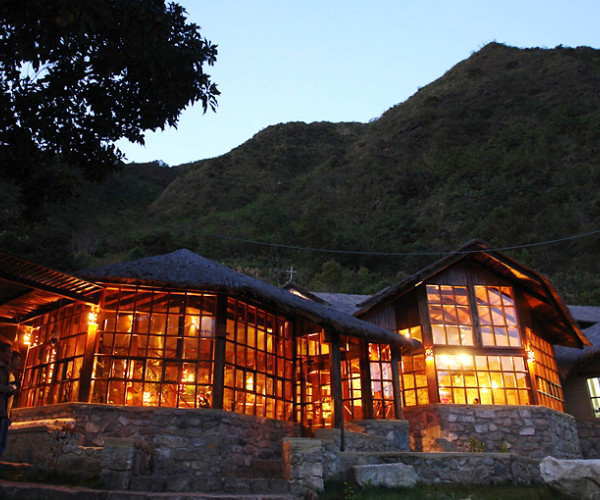
- Camping-style accommodation: Most hikers spend their nights in tents, which in itself is an adventure. The natural environment, the landscapes and the company of other walkers usually make this camping experience interesting and even fun. Along the way, the meals are prepared over the campfire.
- Upscale lodging: To experience the Inca Trail “in style,” the Mountain Lodges of Peru offer lodge-to-lodge trekking adventures. Each day’s trek ends with a hot shower in a cozy lodge, complemented by a massage or a dip in an outdoor Jacuzzi, followed by a gourmet meal with select wines and all provided with highly personalized service by local staff.
Did you enjoy this article?
Receive similar content direct to your inbox.



Amazing Pictures, will follow your tips when we will go there next month :) Thank you
This is such an Important share so many people see stunning places like the Inca and don’t realise the hard work that goes into the actual hike. It is really interesting the difference in the seasons. Have you done both? The most useful thing was what to bring with you. Would you say that sports shoes are better for hiking than boots? As I’ve always been told boots but they are so hard to break in.
In the past I have had some problems, at worryingly low levels with altitude sickness. The Inca Teail, well at least a short version of it, had always been one of my Travel dreams. Am I like to experience problems with altitude? Is there any preparations I can take to help reduce the risk?